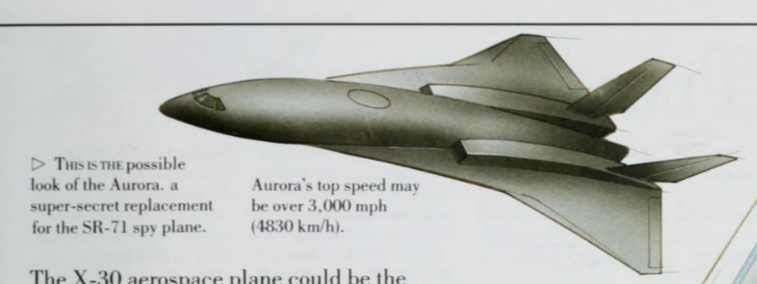Mach 4, 200,000-Ft. -Altitude Aircraft Defined
Wright-Patterson AFB, Ohio—Mach 4, 200,000-ft.-a|titude
aircraft that could be a follow-on to the Lockheed SR-71
strategic reconnaissance vehicle in the 1990s has been defined
by the Air Force Aeronautical Systems Div. and Lockheed.
Studies on the concept have identified only what could be
done. Neither Strategic Air Command nor any other organization
involved in strategic reconnaissance has issued a requirement
statement for such a vehicle. The study data will remain viable
for use in the future. however.
In addition to flying about Mach 1 faster and about 100,000 ft.
higher than the SR-71 for added survivability, the vehicle would
be able to relay its imagery or radar intelligence data via satellite
to a ground station in real time so they could be recorded and
observed instantaneously. The satellite relay would mean that
the aircraft’s post-mission destination or even its survivability
out of the target area need not be a pivotal factor in obtaining
the reconnaissance data successfully.
The current SR-71 remains a viable strategic reconnaissance
platform and planners/engineers here believe Strategic Air
Command or intelligence organizations have not shown strong
interest in a follow-on because of the cost of developing the new
aircraft and the somewhat marginal increase in survivability that
the additional speed and altitude could guarantee.
The only current threat to the SR-71 is the radar-guided
Soviet SA-5 surface-to-air missile, with an altitude capability of
at least 100,000 ft.
Development of a new engine for the vehicle would be the
major cost element. The engine envisioned would be a turboramjet.
It would use an existing turbine engine core, such as the
Pratt & Whitney’J58 used on the SR-71, with the ramjet wrapped
around it. Both Pratt & Whitney and General Electric have
estimated that development of such an engine could require $1
billion.
Basic aircraft structure would be a Lockalloy material, an
aluminum/beryllium combination.
The mission on which the size of the new aircraft was based
involves takeoff from the U. S. and flight with aerial refueling to
the vicinity of a reconnaissance target. There, the aircraft would
be refueled and capable of high-altitude/high-speed flight for
about a 4,400 mi. mission. The aircraft would have a payload of
about 40,000 lb. of reconnaissance equipment.
Exterior appearance of the vehicle would be delta-like configuration
similar to the Martin Marietta X-24B lifting body.
in addition to this version that could be flying as early as the
1990s, Lockheed also identified a higher-capability SR-71
follow-on that could be viable after 2000. This aircraft is envisioned
to have a Mach 7, 250,000-ft.-altitude capability using
supersonic cruise ramjet (scramjet) propulsion.
Advances in technology to support hypersonic flight, including
reconnaissance vehicles, are being pursued by both the Flight
Dynamics Laboratory and the National Aeronautics and Space
Administration.
A number of approaches have been taken to hypersonic
cruise flight vehicles, but the activities have been reduced
considerably because of lack of a mission requirement for
hypersonic aircraft designs.


